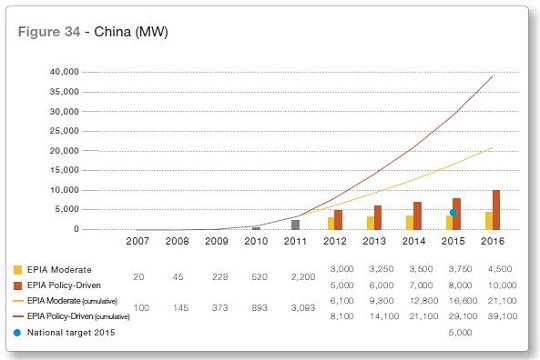Forget about climate change, a threat apparently too abstract for the world to take seriously despite all the scientific evidence backing it up. In China, good old-fashioned air pollution – eye-burning, throat-searing, asthma-inducing smog – is inspiring an invigorated commitment to solar power.
The country has been ratcheting up its solar installation goal with regularity in the past couple years, but the latest boost is quite extraordinary – from 21 gigawatts by 2015, to 35 GW.

“We’ve got more pressure to save energy and reduce emissions as smog worsens due to pollution,” Shi Dinghuan, counselor of China’s State Council and president of Chinese Renewable Energy Society, told Bloomberg.
The new target is an update on the country’s 12th Five-Year Plan, which runs 2011 through 2015. When that plan was originally put out, the solar goal was 5 GW (a figure that was surpassed in 2012 alone). Then it was kicked up to 10 GW before the end of 2011. Then to 15 GW. Then once more up to 21 GW.
Even with the 67 percent leap to 35 GW, this might not be the last upward adjustment of the 2015 target: In December, China Daily reported that leaders were considering shooting for 40 GW. Maybe that will be next week’s announcement.
These lofty goals are inspired in part by the need to feed the Chinese growth engine with some new energy that doesn’t pollute, no doubt. Remember, the country is also adding extraordinary amounts of coal-fired generation, as well. But perhaps just as importantly, China’s leadership is looking to aid its solar manufacturing industry; tariffs and declining global growth have left that sector in deep distress. Given that, it will be interesting to see if companies from outside China will be able to make inroads into a market that, whatever number is ultimately achieved, will surely represent a hefty portion of global demand.